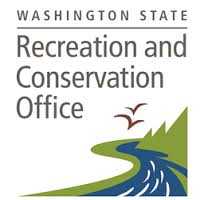Salmon Still Declining
Posted January 18, 2019 at 5:45 am by Tim Dustrude
State’s New Report Shows Salmon Still Declining: Recovery Projects Funded at Only 16 Percent of Estimated Need
 OLYMPIA–Despite two decades of efforts to recover them, wild salmon are still declining—and a report released today by the Governor’s Salmon Recovery Office stresses that adequate funding is needed to turn the tide on the iconic species’ future.
OLYMPIA–Despite two decades of efforts to recover them, wild salmon are still declining—and a report released today by the Governor’s Salmon Recovery Office stresses that adequate funding is needed to turn the tide on the iconic species’ future.
In the past 10 years, regional recovery organizations received only a fraction—16 percent—of the $4.7 billion documented funding needed for critical salmon recovery projects, the report sites.
“We must all do our part to protect our state’s wild salmon,” said Gov. Jay Inslee. “As we face a changing climate, growing population and other challenges, now is the time to double down on our efforts to restore salmon to levels that sustain them, our fishing industry and the communities that rely on them. Salmon are crucial to our future and to the survival of beloved orca whales.”
The newly released State of Salmon in Watersheds report and interactive Web site show Washington’s progress in trying to recover salmon and steelhead protected under the Endangered Species Act. The Web site also features the office’s updated Salmon Data Portal, which puts real-time salmon recovery data and maps at the fingertips of salmon recovery professionals and the public.
Some findings from the report include the following:
- In most of the state, salmon are below recovery goals set in federally approved recovery plans. Washington is home to 33 genetically distinct populations of salmon and steelhead, 15 of which are classified as threatened or endangered under the federal Endangered Species Act. Of the 15, 8 are not making progress or are declining, 5 are showing signs of progress but still below recovery goals and 2 are approaching recovery goals.
- Commercial and recreational fishing have declined significantly because of fewer fish and limits on how many fish can be caught to protect wild salmon. Harvest of coho salmon has fallen from a high of nearly 3 million in 1976 to fewer than 500,000 in 2017, according to the Washington Department of Fish and Wildlife. The harvest of Chinook salmon has followed the same downward trend, with about 970,000 Chinook caught in 1973 compared to about 550,000 in 2017.
The news is not all bleak.
- Summer chum in the Hood Canal are increasingly strong and are nearing the recovery goal.
- Fall Chinook populations in the Snake River are showing signs of progress, thanks largely to improvements in hatchery management, passage at dams along the Columbia and Snake Rivers and habitat restoration work.
“It’s not that we don’t know how to recover salmon,” said Kaleen Cottingham, director of the Recreation and Conservation Office, home of the Governor’s Salmon Recovery Office, which created the report and Web site. “We know what needs to be done, and we have the people in place to do the hard work. We just haven’t received the funding necessary to do what’s required of us.”
“Salmon recovery projects that can make the biggest impact now are often larger scale, engage many jurisdictions and depend on collaboration and significant funding from state, federal and private sources to make them happen,” said Phil Rockefeller, chair of the Salmon Recovery Funding Board, which distributes state funding for salmon recovery.
The report also calls for stronger land use regulations and more enforcement of those regulations to protect shorelines and improve fish passage and water quality.
Recovery efforts benefit more than just salmon. According to the report, restored rivers provide clean and reliably available water for drinking and irrigation, reduce flood risk and support outdoor recreation and the state’s economy. Salmon restoration funding since 1999 has created jobs and resulted in more than $1 billion in total economic activity, the report states.
The report also notes changes that need to be made to improve salmon recovery, including addressing climate change, removing barriers so fish can reach more habitat, reducing salmon predators and better integrating harvest, hatchery, hydropower and habitat actions.
The report also outlines steps people can take in their everyday lives to contribute to salmon recovery, including conserving water, safely disposing of unused prescription drugs and keeping up on car maintenance to prevent oil and fuel leaks.
“It’s going to take all of us coming together to make a change for salmon and our future,” Cottingham said.
Learn more at stateofsalmon.wa.gov.
You can support the San Juan Update by doing business with our loyal advertisers, and by making a one-time contribution or a recurring donation.
Categories: Animals, Wildlife
One comment:










One comment...
Gee, here’s one to save salmon: Stop the needless Money Salmon Derby tournaments where only the largest are taken from the breeding chain, male and female. At the same time you could take thousands of gallons of spent fuel and exhaust containing unburnt fuel dumped below the waterline, concentrated in a two day period, by over several hundred highspeed, high horsepower fuel inefficient Stink Pots. There was no one to stand up for the needless slaughter of trophy buffalo, is there one of us to stand up for our Whales?
By submitting a comment you grant the San Juan Update a perpetual license to reproduce your words and name/web site in attribution. Inappropriate, irrelevant and contentious comments may not be published at an admin's discretion. Your email is used for verification purposes only, it will never be shared.